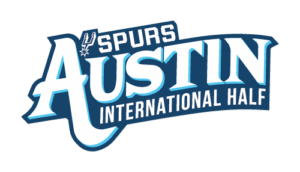Every training cycle has its highs and lows. At the start, motivation feels unstoppable with fresh gear, a new plan, and big goals. As race day approaches, excitement builds with the finish line in sight. But somewhere in the middle, when the novelty wears off and the finish line feels far away, many runners experience what’s known as the mid-training blues. If you have been feeling stuck, tired, or unmotivated, you are not alone. Here are some simple ways to push through and keep your training on track.
Recognize It’s Normal
The first step is understanding that this slump is part of the process. Your body is adapting to harder efforts and your mind is adjusting to the routine. Instead of getting discouraged, remind yourself that this feeling is temporary and even experienced runners face the same challenge.
Switch Up Your Routine
Running the same routes and workouts week after week can start to feel repetitive. Add variety by exploring a new running path, joining a group run for fresh energy, or replacing one steady run with intervals or hill training. Cross-training activities such as cycling, yoga, or strength workouts can also provide a refreshing change while still supporting your training. Sometimes a simple shift is enough to bring back the excitement.
Focus on Small Wins
The end goal may feel far away during this stage of training, so focus on smaller achievements instead. Celebrate completing a long run, staying consistent with your schedule, or improving your pacing on a workout. Each of these wins adds up and reminds you that progress is happening.
Take Care of Your Body
Fatigue often builds midway through training. Pay attention to what your body is telling you and prioritize recovery. Make sure you are getting enough sleep, eating balanced meals that fuel your performance, and recovering properly with stretching or foam rolling. Often, what feels like lack of motivation is actually your body asking for better care.
Revisit Your Why
Think back to the reason you signed up for the Spurs Austin International Half. Was it to push your limits, have fun with friends, or experience the thrill of race day in Austin? Reconnecting with your personal why can reignite your drive and remind you that the effort is worth it.
Lean on Your Community
Training does not have to be a solo effort. Reach out to a friend, join a local running group, or share your progress online. A supportive community can lift you up when your motivation dips and remind you that others are running the same path with you.
Keep the Finish Line in Sight
Even if it feels far away, remember that the finish line is waiting. Picture yourself running through the streets of Austin, hearing the cheers, and crossing with pride. Visualizing that moment can carry you through the toughest training weeks.
The mid-training blues may feel discouraging, but they are only a small part of your training journey. By adjusting your routine, focusing on small victories, and leaning on your support system, you will stay strong and ready for race day. Every mile you run now is shaping the runner who will cross the finish line at the Spurs Austin International Half with confidence and excitement.

 Summer is here, and if you’re training for the Austin International Half Marathon or just staying active in the Live Music Capital of the World, hydration is your best friend! With temperatures soaring into the 90s and beyond, here’s how to stay cool, safe, and strong on the roads and trails of Austin.
Summer is here, and if you’re training for the Austin International Half Marathon or just staying active in the Live Music Capital of the World, hydration is your best friend! With temperatures soaring into the 90s and beyond, here’s how to stay cool, safe, and strong on the roads and trails of Austin. Some of Austin’s best running routes are dotted with water fountains. Here’s where to find them:
Some of Austin’s best running routes are dotted with water fountains. Here’s where to find them: